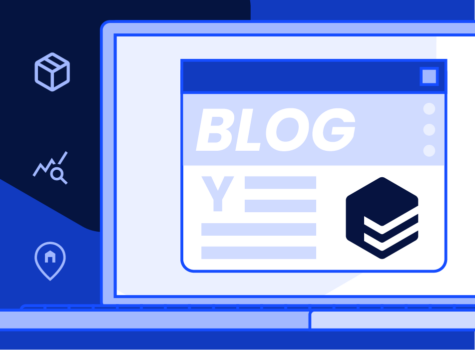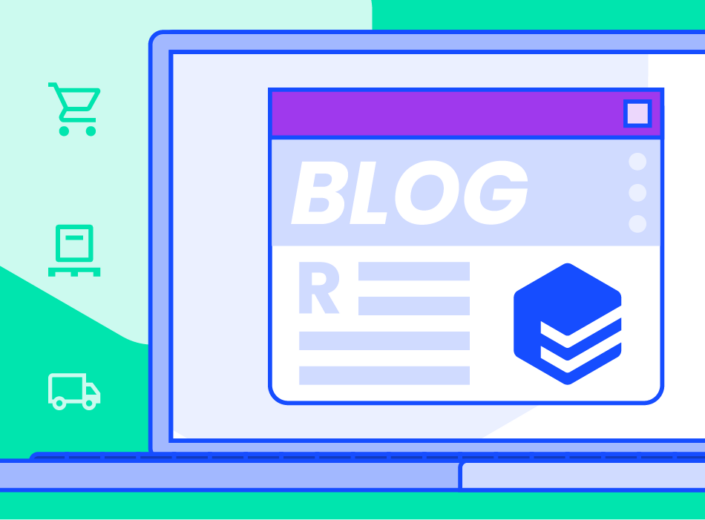Think of logistics as an orchestra. The partners you work with—suppliers, carriers, and technology platforms—are musicians, and they strengthen your supply chain by working together in harmony.
If partners represent musicians, a 4PL is the conductor who leads them all. As your logistics “orchestra” grows, a 4PL makes sure that every instrument stays in tune and plays at the right tempo.
In this article, we’ll take a closer look at what 4PLs are, how they work, and when your business should consider partnering with one.
What is 4PL (fourth-party logistics)?
Fourth-party logistics, also known as 4PL, is a logistics model where a company outsources its supply chain management and logistics responsibilities to an external provider. The 4PL provider oversees the supply chain from start to finish, acting as a single point of contact between the company and the suppliers, carriers, and 3PLs they work with.
By consolidating multiple providers under the 4PL umbrella, you can decrease costs and boost efficiency.
4PLs DO:
- Develop and manage 3PL relationships. 3PL providers are logistics partners that handle order fulfillment, including warehousing, picking, packing, and shipping. 4PLs optimize the activities of your current 3PLs and help form new partnerships when necessary.
- Oversee in-house logistics. If you keep order fulfillment in-house rather than using 3PLs, 4PLs manage your internal logistics processes. Prefer to go with a combination of insourcing and outsourcing? A 4PL can help get everything running smoothly.
- Manage the supply chain from start to finish. From procurement and warehousing to transportation and distribution, 4PLs take a holistic approach to logistics management. They create and execute strategies to improve every segment of the supply chain.
- Analyze data and provide actionable insights. 4PLs provide the technology and expertise needed to use your data to its fullest potential. With a data-driven approach, you can make informed decisions, anticipate market trends, and react quickly to demand fluctuations.
4PLs DON’T:
- Own physical assets. Just like the conductor of an orchestra doesn’t play an instrument during a concert, 4PLs don’t usually own physical assets like distribution centers or warehouses. Instead, they optimize existing resources to achieve the best results possible.
- Operate in isolation. Because 4PLs don’t own physical assets, working only with a 4PL wouldn’t do you much good. Rather than being a standalone entity, a 4PL works collaboratively with 3PLs and other partners in your supply chain.
How 4PLs work
Now that you have a grasp of what 4PLs are, let’s dive deeper into how they work. Because of their high-level oversight across the entire supply chain, 4PLs have a hand in everything from order fulfillment to returns.
3PL and in-house fulfillment management
3PLs handle order fulfillment from their strategically located distribution centers. They receive incoming orders, pick products off shelves, package them, and hand them off to carriers.
Rather than handling the day-to-day tasks of order fulfillment, a 4PL acts as the middleman between your business and the 3PL(s) you work with, handling communication and monitoring their performance.
If you don’t decide to outsource fulfillment to 3PLs, never fear! Fourth-party logistics providers will help you optimize your own distribution centers.
Transportation
If you source products from various locations, transporting them to your distribution centers can get complex. 4PLs step in to make the transportation process easy. They assess the most cost-effective and efficient routes, choose the right carriers, and make sure your products move seamlessly from point A to point B.
Warehousing
The location of your warehouses makes a huge difference in delivery costs and time. But how do you choose where to buy warehouses or rent space? 4PLs make the decision for you, using their logistics expertise and technology to make sure inventory is stored in the best location.
Inventory management
Inventory management is a delicate balance. Overstocking ties up capital, while understocking keeps products out of the hands of customers who want them, leading to lost revenue. Using inventory management systems and data analytics, 4PLs monitor inventory levels and make sure supply aligns with demand.
Shipping
Your customers probably don’t care how you source, transport, or store products. But they do care about the shipping process because it directly affects them.
To keep customers satisfied with delivery times and costs, you need to choose the right carriers and shipping methods. Or you can have a 4PL do it for you! In addition to selecting the best carriers, methods, and routes, 4PLs can coordinate shipment tracking to help prevent issues that may arise during transit.
Returns
The returns process—also known as reverse logistics—is the way a company handles goods that customers send back due to damage, poor fit, or other factors.
As the world of ecommerce evolves, returns are becoming more common. According to one study, 26% of shoppers returned more than four items over the course of just six months. Working with a 4PL helps you survive and thrive in the complex world of reverse logistics. 4PLs help streamline every phase of the returns process, from inspecting returned items to analyzing returns data.
The difference between 3PLs and 4PLs
3PL vs. 4PL. What’s the difference, and which is the best choice for your business?
The main difference between a 3PL and a 4PL lies in their scope. While 3PLs focus specifically on order fulfillment, 4PLs have a broader role: overseeing the supply chain from start to finish.
A 3PL, or third-party logistics provider, is a logistics partner that owns and operates distribution centers. Businesses outsource order fulfillment to the 3PL, which stores inventory, picks and packs orders, and hands off packages to carriers. While 3PLs excel in transportation, warehousing, and order fulfillment, their services don’t extend any further.
In contrast, 4PLs take a strategic, comprehensive approach to supply chain management. Unlike 3PLs, which specialize in just a few core areas of logistics, 4PLs have expertise that extends to all areas of the supply chain.
When to start using a 4PL
Is your business expanding rapidly? Are you getting ready to cross the line into enterprise status? If so, you might be ready to join the 12% of businesses that have enlisted the services of a 4PL.
Experiencing booming growth
As businesses grow, their supply chain gets more complex. With each passing month, it becomes more difficult to keep up with the influx of customer orders. What happens next?
If your business is growing so rapidly that you’re struggling to keep up with order volume, it might be time to partner with a 4PL. With a strategic perspective that goes beyond the capabilities of a 3PL, 4PLs play a pivotal role in managing the growth of rapidly expanding companies.
Keep in mind that 4PLs are usually best suited for medium to large-sized companies; fast-growing small businesses often start with a 3PL.
Crossing the line into enterprise status
Imagine a business hovering on the verge of enterprise status. It has multiple 3PL providers, intricate supply chains, and a global footprint. At this point, supply chain management is a monumental effort—and keeping logistics in-house isn’t always worth it.
As your business matures and sets its sights on enterprise status, a 4PL can become your strategic secret weapon. With its general expertise and specific knowledge of your business, a 4PL is perfectly positioned to keep your business competitive in the enterprise market.
Advantages of 4PLs
Let’s explore three reasons why working with a 4PL can transform your ecommerce business.
High-efficiency logistics management
4PLs eat, sleep, and breathe efficiency. Everything they do is calculated to streamline processes while reducing costs. If your business is interested in fulfilling orders faster, reducing lead times, and improving customer satisfaction, a 4PL is an invaluable ally.
Extensive expertise in supply chain management
Are you an expert in supply chain management? Do you want to do research, attend conferences, and immerse yourself in the world of logistics until you are?
If you answered “no” to both questions, a 4PL is your new best friend. They bring the logistics expertise to the table so you don’t have to. Their experts use a wealth of industry knowledge—along with some pretty sophisticated technology—to form and execute strategies that keep your business ahead of the competition.
Time and money saved
With a 4PL focusing on supply chain management, you’re free to focus more time on core business functions like product development, marketing, and customer engagement. We all know that time is money, and the extra time you spend on critical activities will translate into higher revenue.
Additionally, 4PLs reduce costs by negotiating the best rates with carriers and suppliers and optimizing shipping routes.
Disadvantages of 4PLs
Every outsourced logistics solution comes with both pros and cons, so you’ll need to weigh them carefully before making a choice. If you’re considering partnering with a 4PL, keep these potential disadvantages in mind.
Upfront costs
To get things rolling with a 4PL, your business may need to invest in new technology, infrastructure, and personnel. Plus, you’ll need to pay the 4PL’s fees. For organizations with a tight budget, these upfront costs pose a significant hurdle.
If you want to work with a 4PL, weigh the upfront costs against the long-term benefits. Looking through the lens of your overall business strategy, determine if the cost of a 4PL aligns with your goals and needs.
Loss of control
Just as a 3PL puts a degree of separation between you and your order fulfillment process, a 4PL puts a degree of separation between you and your 3PLs and other partners. (This pattern holds true for 1PL, 2PL, and 5PL—see the FAQ section to learn more).
That extra degree of separation removes some of your control over your logistics operations. Think of it as a trade-off: in exchange for the 4PL’s expertise, you relinquish certain aspects of logistics decision-making. If you’re not comfortable with this loss of control, think twice before signing a contract with a 4PL.
FAQs about 4PL
What are the five types of logistics? What are some key components of a 4PL? Read on for the answers to some of the most frequently asked questions about fourth-party logistics providers.
What are the 5 types of logistics?
The five types of logistics include 1PL, 2PL, 3PL, 4PL, and 5PL, and each one puts a greater degree of separation between a business and their logistics management. Here’s a quick breakdown:
- 1PL (first-party logistics). First-party logistics is in-house logistics management. With this model, a company handles all of its logistics internally, from transportation to warehousing and distribution.
- 2PL (second-party logistics). 2PL refers to transportation providers, like carriers or freight companies, that move goods from one point to another.
- 3PL (third-party logistics). 3PLs are external partners that offer a wide range of logistics services, including transportation, warehousing, order fulfillment, and more.
- 4PL (fourth-party logistics). Also known as lead logistic providers, 4PLs are strategic partners that oversee and manage a company’s entire supply chain.
- 5PL (fifth-party logistics). A relatively new concept, 5PLs are logistics service providers that manage networks of supply chains, operating on an even higher level of coordination and integration than 4PLs.
What are the key components of a 4PL?
A few key components of a 4PL include strategic oversight, technology integration and data analytics, and partner management.
- Strategic oversight. 4PLs provide strategic guidance and oversight to align your logistics processes with business goals and industry trends.
- Technology integration and data analytics. A 4PL is only as good as its tech stack. 4PLs use technology to provide real-time data visibility, automate processes, and make data-driven decisions. By tracking KPIs, they can find ways to improve supply chain performance.
- Partner management. Your supply chain includes lots of external partners: transportation companies, suppliers, and 3PLs. 4PLs manage these relationships to keep costs and transit times low.
What are some 4PL examples?
Here are a few examples of well-known 4PLs:
- Amazon. One of the biggest names in ecommerce, Amazon offers 4PL services to simplify their sellers’ logistics. They store products, provide an ecommerce platform, and fulfill orders.
- DHL Supply Chain. DHL Supply Chain specializes in end-to-end supply chain management, providing services like warehousing, distribution, and customized logistics solutions.
- UPS Supply Chain Solutions. UPS Supply Chain Solutions offers a comprehensive range of logistics and supply chain management services to help businesses streamline their operations.
Is EasyPost a fourth-party logistics service?
EasyPost is not a fourth-party logistics service, but our suite of shipping APIs streamlines logistics operations for 3PLs, 4PLs, and businesses doing in-house fulfillment. With automatic shipping label generation, package tracking, address verification, and more, EasyPost paves the way for flawless package deliveries. We also partner with some of the best 3PLs and 4PLs out there, and we’re happy to help you find the right fit (get in touch here).
Logistics are stronger with EasyPost
You’ve reached the end of this article—congratulations! Now you know the ins and outs of 4PL in logistics. As the next step in your enterprise shipping and logistics journey, we recommend checking out our free ebook “Shipping for Enterprises.”
Ready to read? Download the ebook for free



